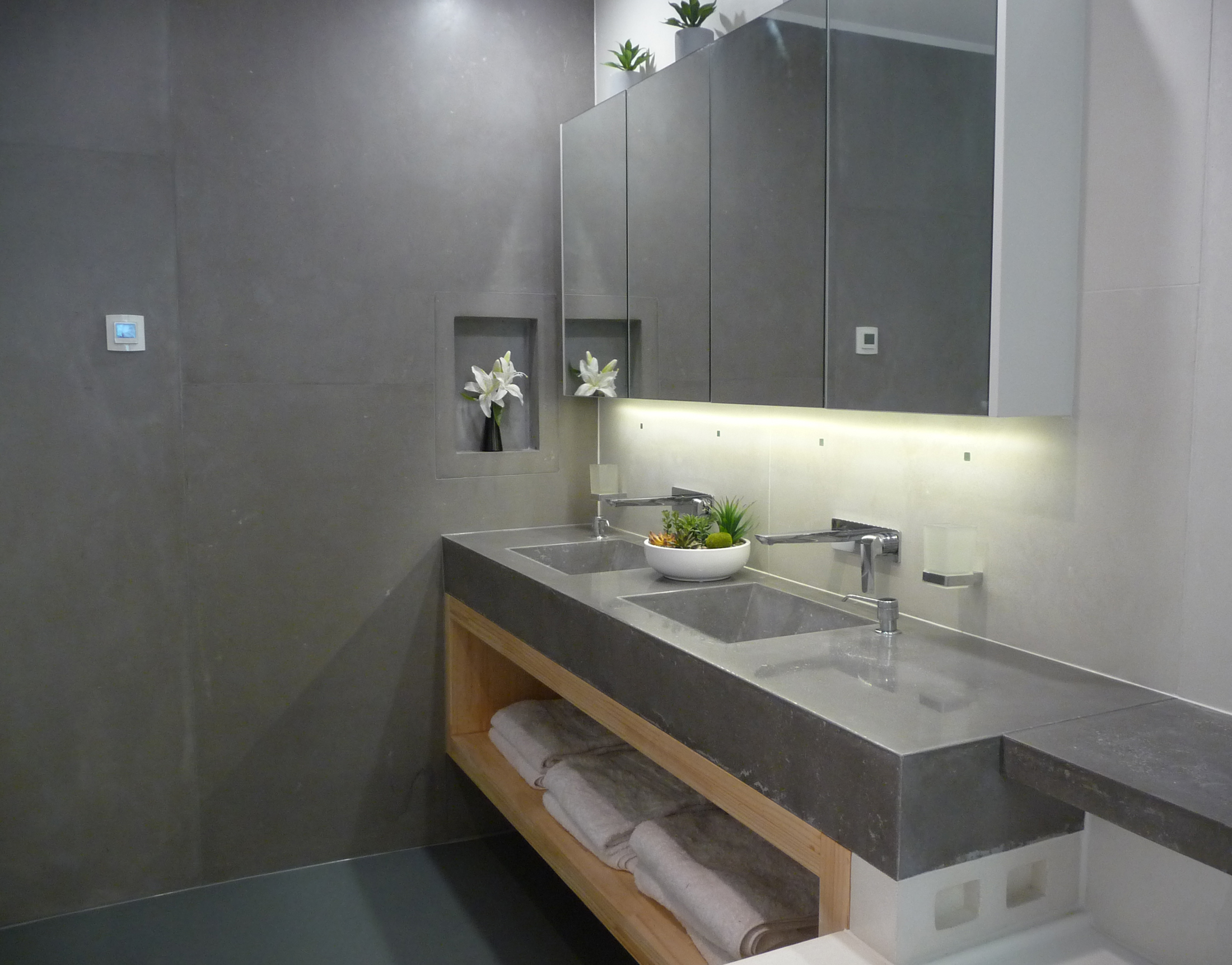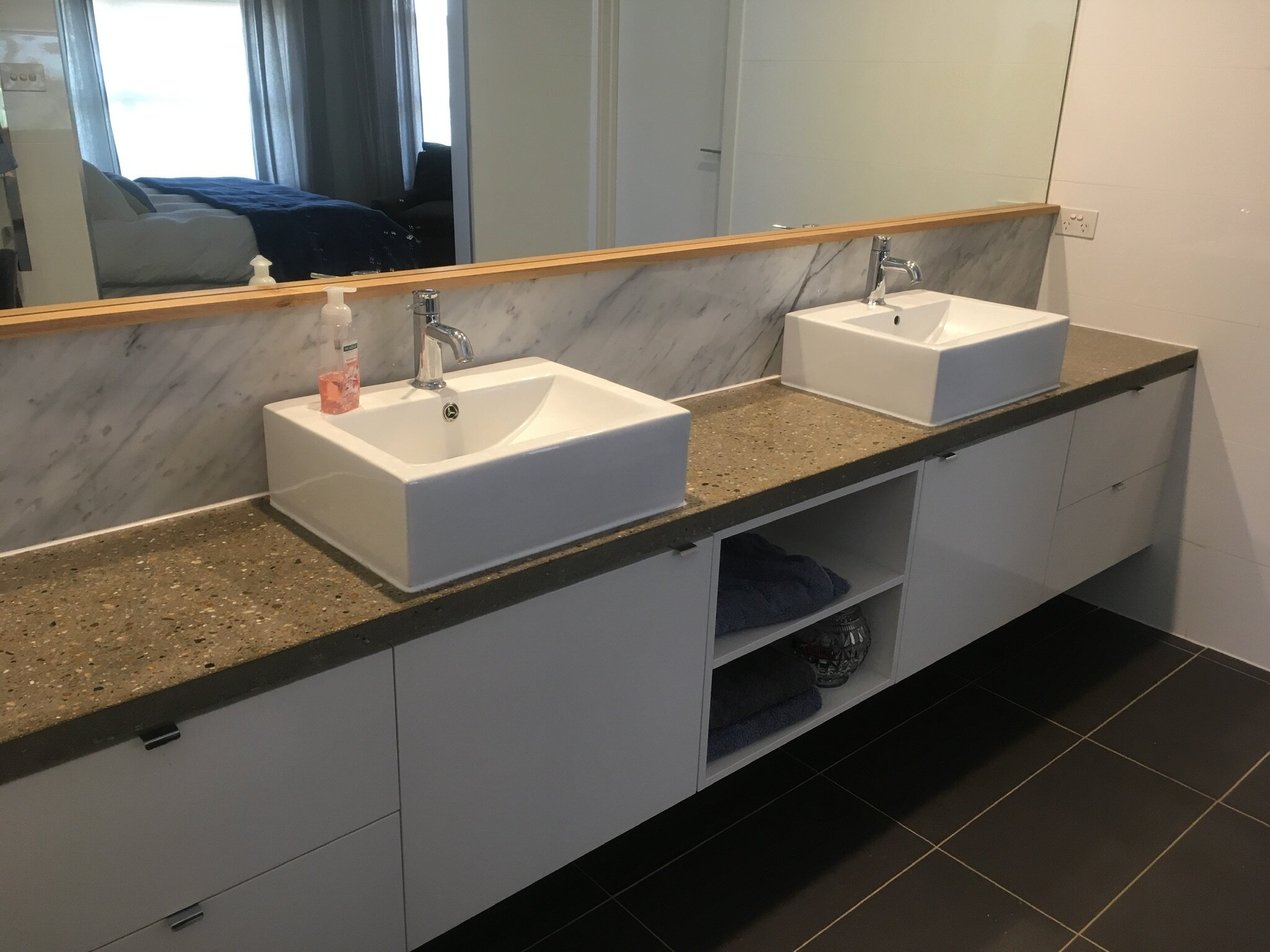The Rise of Modern Concrete Bathroom Vanities

The contemporary bathroom design landscape is undergoing a dramatic shift, with concrete vanities emerging as a leading trend. These durable and visually striking fixtures are captivating homeowners seeking to infuse their spaces with a touch of modern elegance and industrial charm.
Factors Driving the Popularity of Concrete Vanities
The rising popularity of concrete vanities can be attributed to several key factors. The desire for unique and durable materials is a significant driver, as concrete offers a distinct aesthetic and exceptional longevity. Concrete vanities are highly resistant to scratches, stains, and moisture, making them ideal for the demanding bathroom environment. Additionally, the versatility of concrete allows for customization, enabling homeowners to create bespoke vanities that perfectly complement their bathroom design.
Design Considerations for Modern Concrete Bathroom Vanities: Modern Concrete Top Bathroom Vanities

Modern concrete bathroom vanities offer a unique blend of durability, style, and versatility. However, creating a functional and aesthetically pleasing vanity requires careful consideration of design elements. From choosing the right concrete finish to incorporating storage solutions, the design process plays a crucial role in achieving the desired look and functionality.
Selecting the Right Concrete Finish
The concrete finish significantly impacts the overall appearance and feel of the vanity. A wide range of finishes are available, offering various textures, colors, and levels of polish. Consider the following factors when selecting a concrete finish:
- Polished Concrete: Polished concrete offers a smooth, glossy finish that reflects light and creates a contemporary look. It is ideal for creating a sleek and modern aesthetic. However, it requires regular maintenance to maintain its shine.
- Honed Concrete: Honed concrete provides a matte finish with a slightly rougher texture than polished concrete. It offers a more understated and sophisticated look, making it suitable for both traditional and modern bathrooms. Honed concrete is easier to maintain than polished concrete.
- Exposed Aggregate Concrete: Exposed aggregate concrete reveals the natural beauty of the aggregate materials used in the concrete mix. This finish creates a rustic and textured look, adding character and depth to the vanity. It is a popular choice for contemporary and industrial-style bathrooms.
- Stained Concrete: Staining concrete allows for customization by adding color and depth to the finish. Various stains are available, offering a wide range of hues and shades. Staining can enhance the natural beauty of the concrete or create a unique and personalized look.
Determining the Ideal Size and Shape
The size and shape of the vanity are crucial for optimizing bathroom space and functionality. Consider the following factors:
- Bathroom Size: A smaller vanity is suitable for compact bathrooms, while a larger vanity is ideal for spacious bathrooms. Consider the overall layout and available space when choosing the vanity’s dimensions.
- Storage Needs: A larger vanity with ample drawers and cabinets is necessary for storing toiletries, towels, and other bathroom essentials. If space is limited, consider a vanity with built-in shelves or a mirror cabinet for additional storage.
- Shape: Rectangular vanities are the most common and versatile option, while curved or oval vanities can add a unique touch to the bathroom. Choose a shape that complements the bathroom’s overall design and layout.
Countertop Options for Modern Concrete Vanities
The countertop is a key design element that complements the concrete vanity and adds functionality. Various materials can be used for countertops, each offering unique aesthetics and properties. Here are some popular options:
- Natural Stone: Natural stone, such as granite, marble, and quartz, adds elegance and durability to the vanity. It is available in various colors and patterns, allowing for customization to match the bathroom’s design aesthetic.
- Wood: Wood countertops offer a warm and natural feel, complementing the modern concrete vanity’s industrial aesthetic. Consider using reclaimed wood for a sustainable and unique look.
- Glass: Glass countertops add a sleek and contemporary touch to the vanity. They are easy to clean and offer a minimalist look. Consider tempered glass for durability and safety.
Incorporating Lighting and Storage Solutions
Lighting and storage solutions play a crucial role in creating a functional and stylish vanity. Consider the following:
- Lighting: Adequate lighting is essential for applying makeup, shaving, and other bathroom tasks. Consider using a combination of ambient lighting and task lighting to illuminate the vanity area effectively. Pendant lights, sconces, and vanity mirrors with integrated lighting are popular options.
- Storage Solutions: Modern concrete vanities often feature built-in storage options, such as drawers, cabinets, and shelves. Consider the storage needs and choose a vanity with ample storage space. Utilize organizers and trays to maximize storage efficiency and keep the vanity clutter-free.
Advantages and Disadvantages of Concrete Bathroom Vanities

Concrete bathroom vanities offer a unique blend of durability, style, and sustainability. They are becoming increasingly popular as homeowners seek long-lasting and visually striking fixtures for their bathrooms. However, like any material, concrete has its own set of advantages and disadvantages that need to be considered before making a purchase.
Durability and Longevity
Concrete is renowned for its exceptional durability. Its inherent strength makes it resistant to scratches, stains, and heat. Concrete vanities can withstand the daily wear and tear of a bathroom environment, including the constant exposure to moisture and cleaning products. This durability translates into a longer lifespan compared to vanities made from other materials, such as wood or laminate.
Maintenance and Cleaning
While concrete is durable, it requires proper maintenance to preserve its beauty and longevity. One crucial aspect is sealing the concrete surface to protect it from stains and water damage. Applying a sealant regularly helps to create a barrier that prevents liquids from penetrating the porous concrete. Cleaning concrete vanities involves using mild cleaners and avoiding abrasive scrubbers that can scratch the surface.
Environmental Impact
Concrete is a naturally occurring material, making it a sustainable choice for bathroom vanities. Its production process requires less energy than some other materials, such as plastic or metal. Additionally, concrete is a highly recyclable material, contributing to a circular economy. By choosing a concrete vanity, homeowners can make an environmentally conscious decision.
Cost Considerations, Modern concrete top bathroom vanities
Concrete vanities generally have a higher initial cost compared to vanities made from wood or laminate. However, their durability and longevity make them a cost-effective choice in the long run. The initial investment in a concrete vanity can be offset by its extended lifespan and reduced need for replacements.
